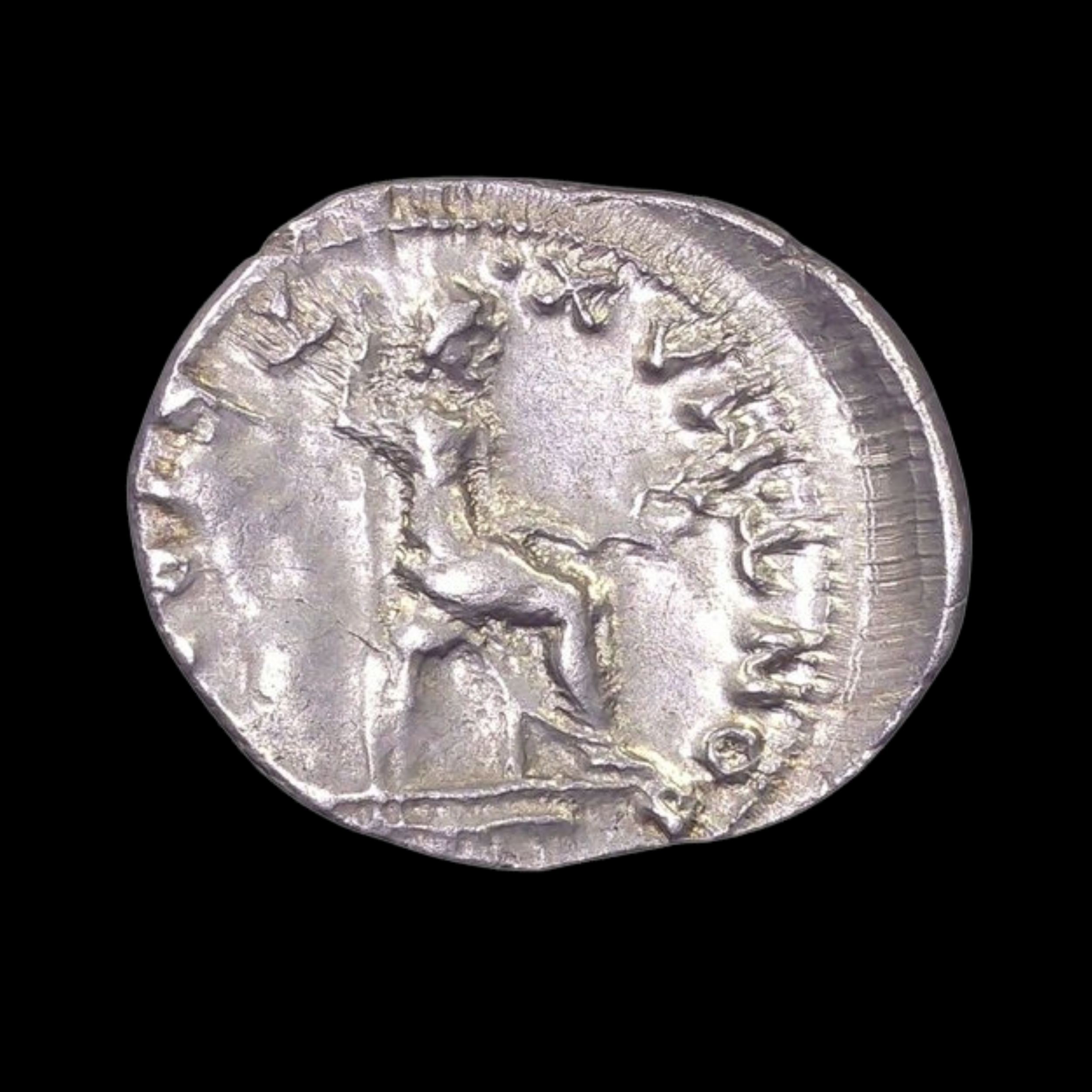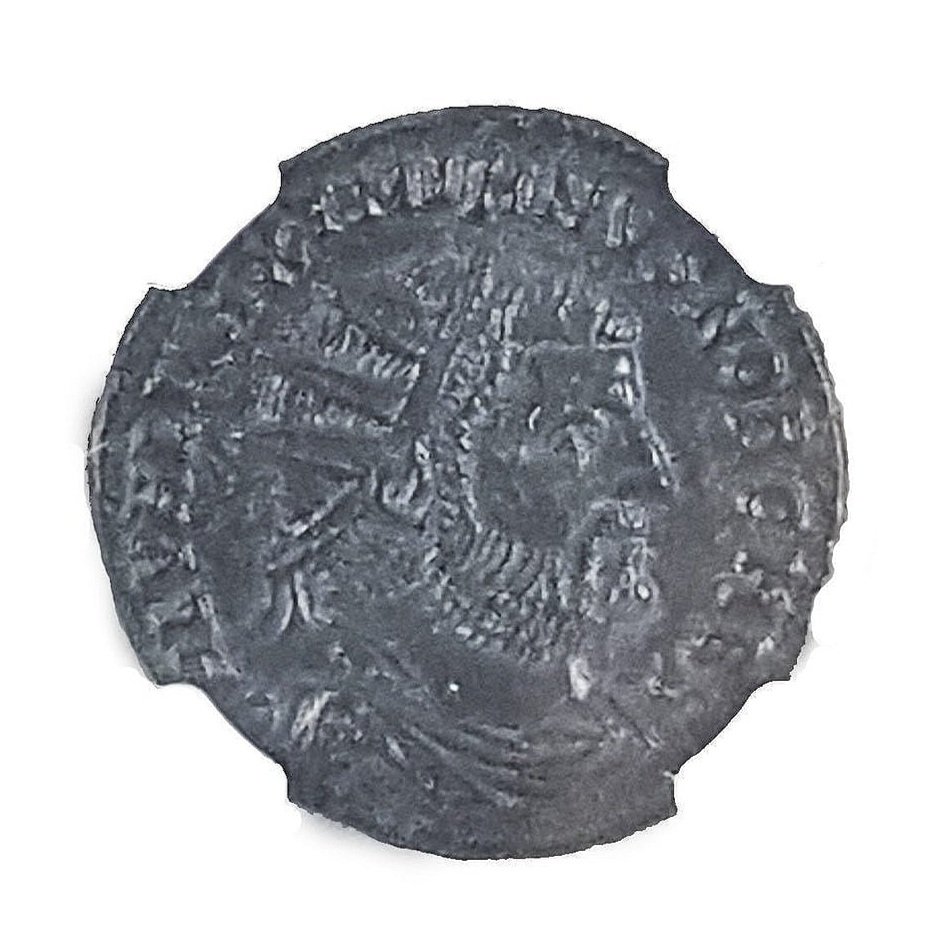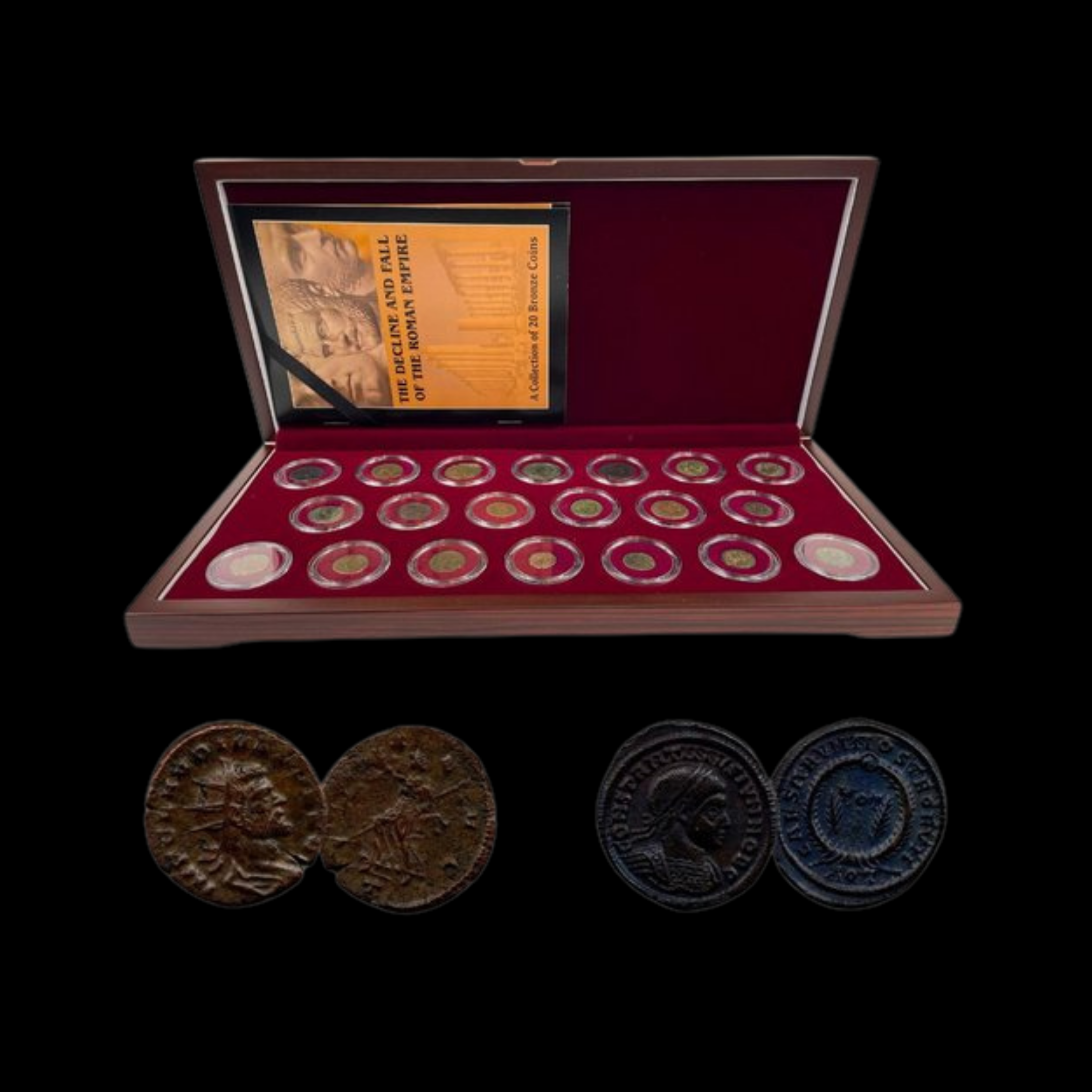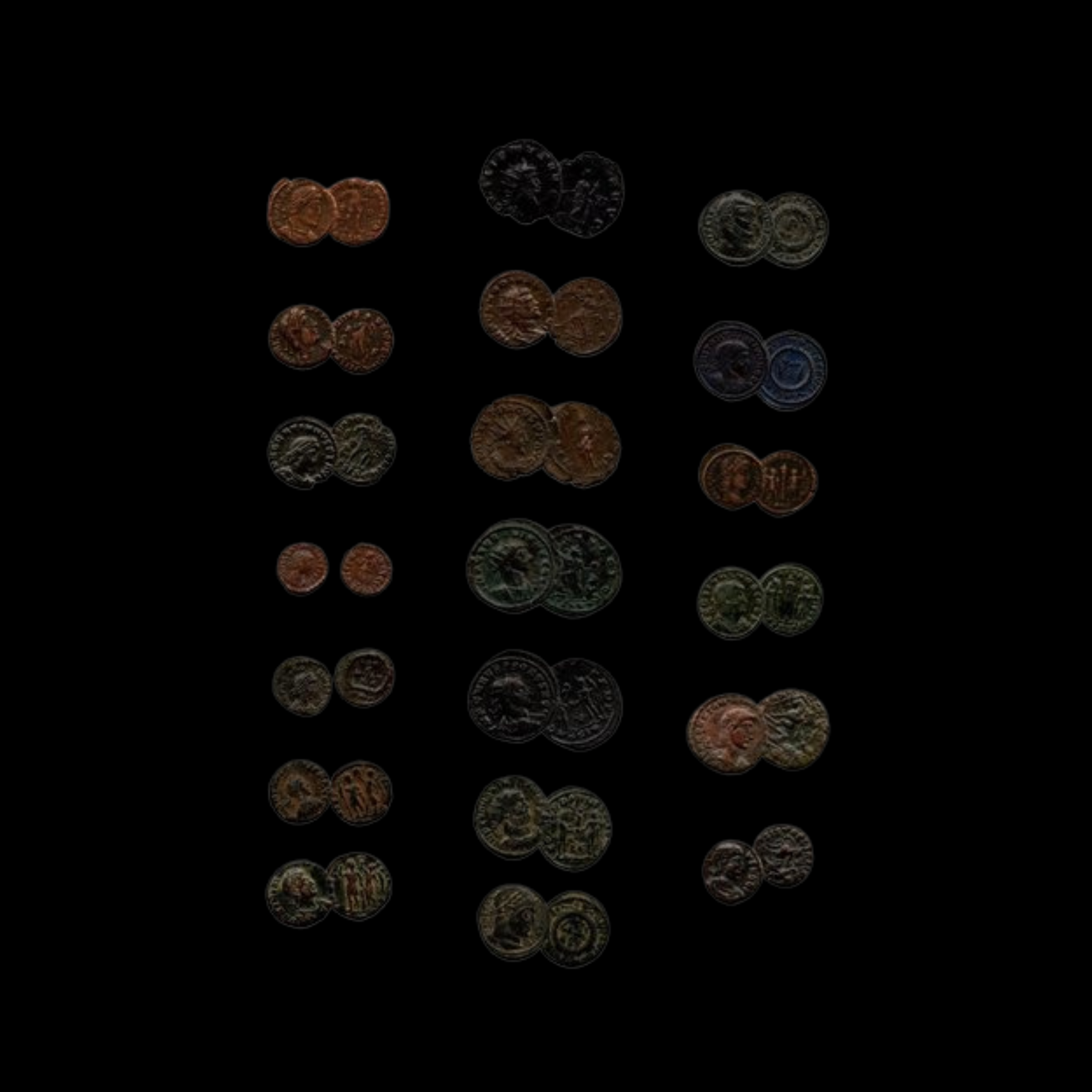 Image 1 of 2
Image 1 of 2

 Image 2 of 2
Image 2 of 2



Roman Empire Silver Denarius of Vespasian (about 1950 years ago)
This silver coin was minted in Antioch (modern Antakya, Turkey) during the early reign of Emperor Vespasian, who established the Flavian dynasty after emerging victorious from the civil wars that followed Nero's death. This provincial issue demonstrates interesting connections to earlier imperial coinage.
Coin Description:
Front side: Laureate head of Vespasian facing right with Latin inscription "IMP CAESAR VESPASIANVS AVG" (Emperor Caesar Vespasian Augustus)
Back side: Pax (goddess of peace) seated right, holding scepter and olive branch, with two lines below her seat; inscription "PONT MAX - T(RIB POT)" (Pontifex Maximus, holder of Tribunician Power)
Technical Details:
Silver composition, weighing 3.08 grams
Denarius denomination (standard Roman silver coin)
Reference: Cf. RIC-1539 (aureus from same obverse die as this coin)
Provenance: Ex. Curtis L. Clay Collection; ex Naumann E71, 4 Nov. 2018, lot 449
Date: 70 CE, minted at Antioch
Historical Significance:
This special coin deliberately copies the famous "tribute penny" design of Emperor Tiberius mentioned in the Bible. As noted by numismatist Curtis Clay, both coins show a draped female figure with two lines below her seat, though the legend was expanded from "PONTIF MAXIM" to "PONTIF MAX TRIB POT." This deliberate reference to earlier imperial coinage helped legitimize Vespasian's new dynasty after the civil wars, connecting his rule to the established imperial tradition. A few years later, the Rome mint would also copy this design for both Vespasian and his son Titus.
This silver coin was minted in Antioch (modern Antakya, Turkey) during the early reign of Emperor Vespasian, who established the Flavian dynasty after emerging victorious from the civil wars that followed Nero's death. This provincial issue demonstrates interesting connections to earlier imperial coinage.
Coin Description:
Front side: Laureate head of Vespasian facing right with Latin inscription "IMP CAESAR VESPASIANVS AVG" (Emperor Caesar Vespasian Augustus)
Back side: Pax (goddess of peace) seated right, holding scepter and olive branch, with two lines below her seat; inscription "PONT MAX - T(RIB POT)" (Pontifex Maximus, holder of Tribunician Power)
Technical Details:
Silver composition, weighing 3.08 grams
Denarius denomination (standard Roman silver coin)
Reference: Cf. RIC-1539 (aureus from same obverse die as this coin)
Provenance: Ex. Curtis L. Clay Collection; ex Naumann E71, 4 Nov. 2018, lot 449
Date: 70 CE, minted at Antioch
Historical Significance:
This special coin deliberately copies the famous "tribute penny" design of Emperor Tiberius mentioned in the Bible. As noted by numismatist Curtis Clay, both coins show a draped female figure with two lines below her seat, though the legend was expanded from "PONTIF MAXIM" to "PONTIF MAX TRIB POT." This deliberate reference to earlier imperial coinage helped legitimize Vespasian's new dynasty after the civil wars, connecting his rule to the established imperial tradition. A few years later, the Rome mint would also copy this design for both Vespasian and his son Titus.
This silver coin was minted in Antioch (modern Antakya, Turkey) during the early reign of Emperor Vespasian, who established the Flavian dynasty after emerging victorious from the civil wars that followed Nero's death. This provincial issue demonstrates interesting connections to earlier imperial coinage.
Coin Description:
Front side: Laureate head of Vespasian facing right with Latin inscription "IMP CAESAR VESPASIANVS AVG" (Emperor Caesar Vespasian Augustus)
Back side: Pax (goddess of peace) seated right, holding scepter and olive branch, with two lines below her seat; inscription "PONT MAX - T(RIB POT)" (Pontifex Maximus, holder of Tribunician Power)
Technical Details:
Silver composition, weighing 3.08 grams
Denarius denomination (standard Roman silver coin)
Reference: Cf. RIC-1539 (aureus from same obverse die as this coin)
Provenance: Ex. Curtis L. Clay Collection; ex Naumann E71, 4 Nov. 2018, lot 449
Date: 70 CE, minted at Antioch
Historical Significance:
This special coin deliberately copies the famous "tribute penny" design of Emperor Tiberius mentioned in the Bible. As noted by numismatist Curtis Clay, both coins show a draped female figure with two lines below her seat, though the legend was expanded from "PONTIF MAXIM" to "PONTIF MAX TRIB POT." This deliberate reference to earlier imperial coinage helped legitimize Vespasian's new dynasty after the civil wars, connecting his rule to the established imperial tradition. A few years later, the Rome mint would also copy this design for both Vespasian and his son Titus.
Vespasian (/vɛsˈpeɪʒ(i)ən, -ziən/; Latin: Vespasianus [wɛspasiˈaːnʊs]; 17 November AD 9 – 23 June 79) was Roman emperor from 69 to 79. The last emperor to reign in the Year of the Four Emperors, he founded the Flavian dynasty, which ruled the Empire for 27 years. His fiscal reforms and consolidation of the empire brought political stability and a vast building program.
Vespasian was the first emperor from an equestrian family who rose only later in his lifetime into the senatorial rank as the first of his family to do so. Vespasian's renown came from his military success;[6] he was legate of Legio II Augusta during the Roman invasion of Britain in 43 and subjugated Judaea during the Jewish rebellion of 66.[7]































